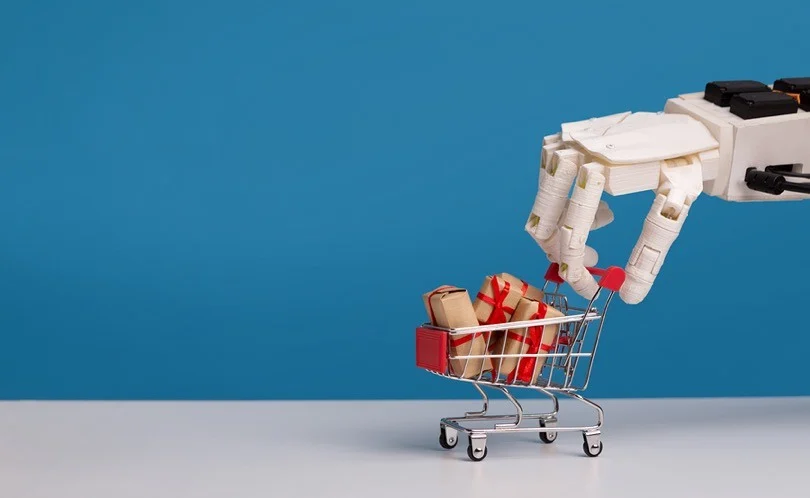Most Impactful Use Case For AI In eCommerce
The Most Impactful Use Case for AI in eCommerce: Personalized Shopping Experiences
Artificial Intelligence (AI) has revolutionized various industries, and eCommerce is no exception. Among the myriad of applications, one stands out as particularly transformative: personalized shopping experiences. This use case leverages AI to tailor the shopping journey to individual preferences, enhancing customer satisfaction and driving sales. In this blog, we will explore how AI-powered personalization works, its benefits, and real-world examples of its impact on eCommerce.
Understanding AI-Powered Personalization
AI-powered personalization involves using machine learning algorithms and data analytics to understand customer behavior and preferences. By analyzing data from various sources such as browsing history, purchase history, and even social media activity, AI can create a detailed profile of each customer. This profile is then used to deliver personalized recommendations, content, and offers.
Key Components of AI-Powered Personalization
- Data Collection and Analysis: AI systems collect data from multiple touchpoints, including website interactions, mobile app usage, and social media engagement. This data is then analyzed to identify patterns and trends.
- Machine Learning Algorithms: These algorithms process the collected data to predict customer preferences and behavior. Techniques such as collaborative filtering, content-based filtering, and deep learning are commonly used.
- Real-Time Personalization: AI can deliver personalized content and recommendations in real-time, enhancing the shopping experience as customers browse through an eCommerce site.
- Customer Segmentation: AI can segment customers into different groups based on their behavior and preferences, allowing for more targeted marketing efforts.
Benefits of AI-Powered Personalization
The impact of AI-powered personalization on eCommerce is profound, offering numerous benefits for both businesses and customers.
Enhanced Customer Experience
Personalized shopping experiences make customers feel valued and understood. When customers receive recommendations and offers that align with their interests, they are more likely to engage with the brand and make purchases. This leads to higher customer satisfaction and loyalty.
Increased Sales and Revenue
Personalization drives sales by presenting customers with products they are more likely to buy. According to a study by McKinsey, personalization can increase sales by 10-15%. By showing relevant products and offers, businesses can boost their conversion rates and average order value.
Improved Customer Retention
AI-powered personalization helps in retaining customers by keeping them engaged with the brand. Personalized emails, product recommendations, and exclusive offers encourage repeat purchases and foster long-term relationships.
Efficient Marketing Strategies
With AI, businesses can create more effective marketing campaigns. By understanding customer preferences and behavior, marketers can design targeted campaigns that resonate with their audience. This leads to higher engagement rates and better return on investment (ROI).
Real-World Examples of AI-Powered Personalization
Several eCommerce giants have successfully implemented AI-powered personalization, setting benchmarks for the industry.
Amazon
Amazon is a pioneer in using AI for personalization. Its recommendation engine, which accounts for 35% of the company’s sales, uses machine learning algorithms to suggest products based on customers’ browsing and purchase history. Amazon’s personalized recommendations appear on the homepage, product pages, and even in email campaigns, making the shopping experience highly tailored.
Netflix
While not a traditional eCommerce platform, Netflix’s use of AI for personalization is noteworthy. Netflix uses AI to recommend shows and movies based on users’ viewing history and preferences. This personalized approach keeps users engaged and subscribed to the service, demonstrating the power of AI in enhancing customer experience.
Spotify
Spotify leverages AI to create personalized playlists for its users. By analyzing listening habits, Spotify’s algorithms curate playlists like “Discover Weekly” and “Daily Mix,” which introduce users to new music tailored to their tastes. This personalization keeps users engaged and loyal to the platform.
Stitch Fix
Stitch Fix, an online personal styling service, uses AI to provide personalized fashion recommendations. Customers fill out a style profile, and Stitch Fix’s algorithms analyze this data along with feedback from previous purchases to suggest clothing items. This personalized approach has helped Stitch Fix build a loyal customer base and achieve significant growth.
Challenges and Future of AI-Powered Personalization
While AI-powered personalization offers numerous benefits, it also comes with challenges. Privacy concerns are a major issue, as customers may be wary of how their data is being used. Businesses must ensure they are transparent about data collection and usage, and comply with regulations such as GDPR.
Another challenge is the complexity of implementing AI systems. Developing and maintaining AI algorithms requires significant investment in technology and expertise. However, as AI technology continues to evolve, it is becoming more accessible to businesses of all sizes.
Looking ahead, the future of AI-powered personalization in eCommerce is promising. Advances in AI and machine learning will enable even more sophisticated personalization techniques. For example, AI could use natural language processing to understand customer reviews and feedback, further refining recommendations. Additionally, the integration of AI with emerging technologies like augmented reality (AR) and virtual reality (VR) could create immersive and highly personalized shopping experiences.
AI-powered personalization is undoubtedly the most impactful use case for AI in eCommerce. By delivering tailored shopping experiences, businesses can enhance customer satisfaction, drive sales, and build long-term loyalty. As AI technology continues to advance, the potential for personalization in eCommerce will only grow, offering exciting opportunities for businesses and customers alike.

